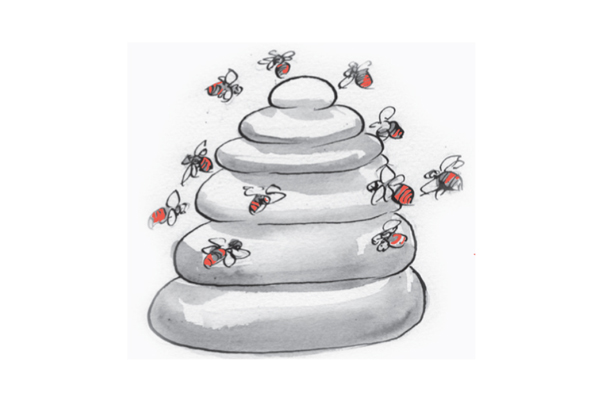There is a point, when human beings come together, that a group of individuals becomes an organisation. Like a hive of bees, a group of people is an organism. And organisms have rules of their own which, operating at their best, override a narrow focus on individual behaviour. Groups of people take on a life of their own and can learn to communicate and organise themselves in a different way from the way they would if they regarded themselves simply as a group of random individuals.
This means that if you learn to spot the rules by which your particular organism operates and focus on adjusting these to deliver the kind of behaviour you are looking for, you will often be surprised by the speed and impact of change.
How the hive works
Think about a beehive. If, for the moment, we regard the beekeeper as the leader, how does she manage the hive? It would be crazy for her to take an individual bee and carry out a check on its health and wellbeing or examine its function and how it carries out its role in isolation from its group. The bee’s behaviour only has meaning in the context of the hive and of its bee counterparts. And, for that matter, so does the beekeeper’s.
The ’problem child’
Yet how often do we do exactly the same thing in our human organisations, from families to businesses? We talk about the ‘problem child’, the ‘disruptive team member’, the ‘departmental silo’ that doesn’t deliver. If we could only fix them and their behaviour, everything would be hunky dory – we think. In my work, this is often the starting point for a conversation with a frustrated business leader, and he or she nearly always asks me to help resolve the problem from the perspective of the individual.
Many leaders miss this essential insight. We are so conditioned in Western society to focus on the individual – his or her rights, duties, character, personality, skills, attributes and faults – that we tend to manage our lives and work from this standpoint. It’s part of the essential survival mechanism of a human being to focus from a very early age on our own needs ahead of those of others – observe any toddler!
So, though we become socialised as we grow into adulthood, most people retain this primary focus. When push comes to shove, we look after ourselves and our own, ahead of the group, team, community or organisation. Thinking in terms of a team, a group or an organisation has to be learned.
One organism
People in groups behave in the way they do because they work with others – they are all part of one organism, like the bees in a hive. You, its leader, are part of the organism too; you’re a reflection of it and it of you. It’s impossible to fix any one individual, or yourself, without causing a knock-on effect elsewhere in the hive.
So, it’s not about you or them
It’s not you versus other people, though I know it sometimes feels that way. The company, the team, the group isn’t ‘yours’ – even if in legal terms you happen to own it. It has a life of its own, and comprises not just you, but many other people too – employees, interns, customers, suppliers, contractors – who interact with each other and influence the group’s behaviour.
So what’s the answer?
The vast majority of people don’t come to work to do a bad job and be disruptive. The individual you are worried about doesn’t want to be a problem – and it’s almost always not an individual problem anyway. They are only like that in the hive of their team, family or organisation.
So the answer isn’t to take an individual person or even an individual department and fix them in isolation. Lead and manage the hive as a whole: examine its environment, its interactions, the written and unwritten rules it operates by and the focus (individual or group) of its members. Work with the whole hive together.
And – don’t do it by yourself! That’s just more of the same.
